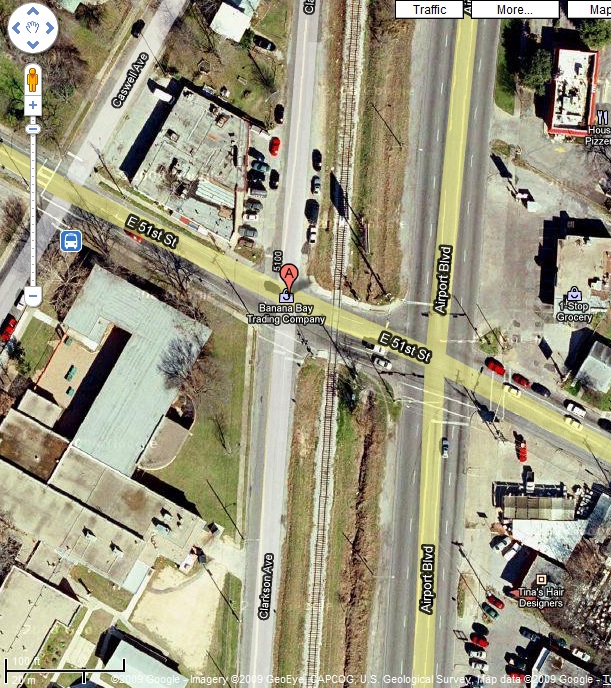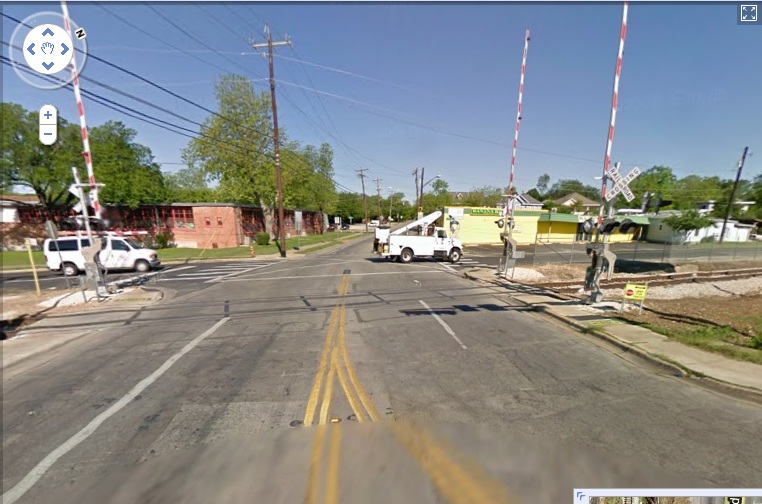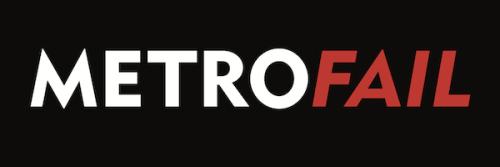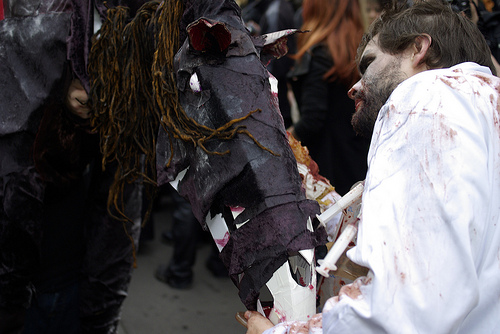Short and not-so-sweet; still no time for this.
Those who didn’t think it was a big deal when the ANC crowd were appointed en-masse to several critical boards and commissions should be ashamed of themselves.
Go to this video. If it doesn’t advance automatically, health care no rx go to C11.
What’s here? Well, it’s just ANC guys Bryan King and Jeff Jack pressuring a property owner on a downtown block to tear down a deck so he can add more off-street parking. Note that not a single time in this entire conversation does anybody, to be fair, including the applicant, even mention the fact that some people patronizing this small business or living in the apartment might not drive every single trip. Only once does anybody bring up the fact that ample on-street parking exists (of course, gasp!, people would have to pay!)
This is downtown, people. This isn’t the suburbs. For those who think the government influence on development is mainly to force density, this ought to be (but probably isn’t) a wake-up call: the primary influence of the government is to force car-dependent development patterns to continue even downtown.
And those who think the ANC crowd and their patron Laura Morrison are going to leave downtown alone and just focus on keeping the neighborhoods suburban should think again, too. Nowhere is safe from these people; right before this video I watched the Planning Commission fail to come to a recommendation on a hotel at 5th/Colorado because the ANC contingent wanted to force another couple hundred grand in concessions for affordable housing (used as a convenient crutch in this case; none of those people actually have any interest in affordable housing or they’d support more multi-family development in their neighborhoods).
Sickening. You were warned; but most of you didn’t listen.
Recording this email for posterity, stomach since I firmly believe this kind of discussion should be in the public eye – so it’s possible for others to see whether the input was acted on or just ignored (as is commonly the case).
Nadia,
This is expanded feedback from the forum – as you may know I was on the UTC for 5 years and used to be a serious bicycle commuter and still maintain a healthy interest, and I live about 500 feet from the intersection in question.
First issue is the fact that the bike lanes ‘downstream’ of the intersection were recently restriped all the way back to the intersection. This removes much of the supposed reason for bike boxes (in the old design where the bike lanes didn’t start for 100 feet or so past the intersection, the bike boxes would have allowed cyclists to be at the front of through traffic so they could get ‘up and over’ rather than having to wait behind motorists – now there is literally no reason to even get in the bike box.
The second problem is one of signage and paint – without a “Stop HERE on Red” sign, motorists don’t typically stop that far back from the intersection – even when white lines exist on the pavement. Coloring the bike box would help but would, I think, not be sufficient.
Please forward my email to the CTR people and invite them to contact me if they would like. I’d be very happy to share continued observations as I go through this intersection an average of 2 times per day, usually in the rush hours.
Regards, Mike Dahmus
mike@dahmus.org
Extracted from a comments thread on facebook; name omitted to protect privacy in case they mind.
we can always count on our buddy Mike to leave no dead horse unbeaten! Certainly Urban Rail will be great (if we do it right) and we all need to support it, approved but calling the redline ‘useless’ is a bit much. Perhaps useless to you, Mike, but so are dozens of bus routes (and roads for that matter) you will never use – that doesn’t make them useless to the folks who do (and will) use them.
And my response:
http://mdahmus.monkeysystems.com/blog/archives/000573.html
(done with the old rail timetables, not the new presumably slower ones which aren’t up yet).
The Red Line is ‘useless’ because for most people, it will be a slower commute than the existing express bus service. We spent a lot of capital dollars, in other words, to get lower quality service than what we already had. (And operating costs are likely to be close to express bus with the shuttle-bus costs added in).
And it is most definitely not a dead horse – because your agency continues to seek to spend additional scarce rail dollars on the Red Line (repeating Tri-Rail’s mistake of trying to polish a you-know-what instead of building something more useful somewhere else) and on other similarly useless commuter rail lines – meaning those dollars obviously can’t be spent on the CoA project.
So tell me, readers, is the argument of the CM guy compelling at all? Before the rebuttal? After? I really mean what I say here – the horse isn’t dead, because it keeps getting fed. Those rail dollars (federal and local) could in fact be saved for the City of Austin’s urban rail program – but once they’re spent on commuter rail they’re gone for good, and we aren’t exactly swimming in other money to make up the difference. We need to stop further ‘investments’ in commuter rail, in other words, if the urban rail line is to have a decent shot at getting built in our lifetimes.
Check out me on KUT yesterday about the intersection problems along Airport and notice that I’m not alone in failing to buy Capital Metro’s BS about it just being a simple education problem. Good job, diagnosis Mose, angina getting some key points across from a variety of interviewees.
Also,
While searching for something else, I stumbled on this old Chronicle article with this money quote, which backs up what I was saying for a long time about the failure of Capital Metro to seek federal funds despite it being promised in the run-up to the 2004 commuter rail election:
The prevailing wisdom has been that a project in Smart-Grown Austin, serving major trip generators like UT and the Capitol complex, supported by Cap Met’s ample sales tax revenue, would be a slam dunk for a “highly recommended” rating. (Conversely, the original Red Line, which had far lower ridership and — even though it was on existing rail right of way — only marginally lower projected costs, was headed, Cap Met insiders say, for a “not recommended” kiss-of-death rating, which is why the transit authority switched tracks at the 11th hour.)
Note, though, that this was back when they’d be talking about running new track in the Red Line corridor – not reusing the existing freight rail track (which, as it turns out, hasn’t been as cheap or easy as advertised). The important point, though, is that the Feds (and Capital Metro) acknowledged that even with brand-new double-track, ridership on the Red Line as delivered today would never even approach the levels at which the FTA would have considered good enough to help pay for. And this wasn’t the Bush FTA that hated rail – this was the Clinton FTA which paid for good light rail starts all over the country (although even Bush’s FTA funded a couple, like Seattle’s).
As per yesterday’s crackplog, note that Capital Metro is still out there seeking funding, both federal and local, to double (or even triple) track the Red Line despite the fact that it won’t make much difference for ridership – because as the Feds knew and CM used to admit, it doesn’t go anywhere worth going and never will.
No, rubella not like the GM Death Watch at my favorite car blog; this is a “how long before somebody’s killed” series. Today, more about some pictures of the intersection I talked about on KUT last week.
First, the overheard. Imagine you’re headed west on 51st across Airport because you just went to Home Depot and are headed back to Hyde Park or points south. (Hint: Red River starts just south of this image as a turn off of Clarkson; turning on Clarkson is thus by far the best way into or around Hyde Park by car).

Not a lot of room there to queue up for that left turn, huh. Let’s zoom in with google’s streetview:

Uh-oh. That don’t look good. But surely Capital Metro has done something about this intersection since then, right?
Yep. They’ve flapped their gums about how stupid drivers are to stop on the tracks – but have done precisely nothing to address the conditions at this intersection that almost always require you to stop on or just past the tracks if you ever want to make this left turn.
Guess who just did that on Sunday? If you were following the twitter machine, you’d already know. And yes, I know better; but no, the trains weren’t running, at least not yet. At the time I made this turn, traffic was moderate – too much to sit across Airport until clear on the other side; too little to be in serious danger on the other side (i.e. if the gate started going down I had an escape path ready).
There is just barely enough space before the gate for a small car to stop, if they don’t mind sticking out past the beginning of the left-turn bay. There is not enough room past the gate for a left-turning car to stop without risking having the rear end of the car at or past the crossing gate. In other words, quite often there isn’t enough space for even one vehicle to queue up for this left turn without being in violation of the crossing gate or the double yellow behind. Not even one. So what do you think drivers are going to do here, in the real world?
You don’t open up a rail line that requires that people be willing to sit through multiple light cycles on the other side of Airport to make this turn safely (if you can even judge that far ahead – you usually can’t; oncoming traffic comes too quickly). You redesign the intersection to eliminate the turn, or re-engineer it some other way to make it safe rather than just hoping your gum-flapping will convince motorists to do something which may prevent them from ever making their turn. That is, unless you sold this thing as a pig-in-a-poke by claiming it would be easy and cheap to run diesel trains on existing track.
More later, if time warrants. Yes, there’s other problems just at this one intersection.
No, rubella not like the GM Death Watch at my favorite car blog; this is a “how long before somebody’s killed” series. Today, more about some pictures of the intersection I talked about on KUT last week.
First, the overheard. Imagine you’re headed west on 51st across Airport because you just went to Home Depot and are headed back to Hyde Park or points south. (Hint: Red River starts just south of this image as a turn off of Clarkson; turning on Clarkson is thus by far the best way into or around Hyde Park by car).

Not a lot of room there to queue up for that left turn, huh. Let’s zoom in with google’s streetview:

Uh-oh. That don’t look good. But surely Capital Metro has done something about this intersection since then, right?
Yep. They’ve flapped their gums about how stupid drivers are to stop on the tracks – but have done precisely nothing to address the conditions at this intersection that almost always require you to stop on or just past the tracks if you ever want to make this left turn.
Guess who just did that on Sunday? If you were following the twitter machine, you’d already know. And yes, I know better; but no, the trains weren’t running, at least not yet. At the time I made this turn, traffic was moderate – too much to sit across Airport until clear on the other side; too little to be in serious danger on the other side (i.e. if the gate started going down I had an escape path ready).
There is just barely enough space before the gate for a small car to stop, if they don’t mind sticking out past the beginning of the left-turn bay. There is not enough room past the gate for a left-turning car to stop without risking having the rear end of the car at or past the crossing gate. In other words, quite often there isn’t enough space for even one vehicle to queue up for this left turn without being in violation of the crossing gate or the double yellow behind. Not even one. So what do you think drivers are going to do here, in the real world?
You don’t open up a rail line that requires that people be willing to sit through multiple light cycles on the other side of Airport to make this turn safely (if you can even judge that far ahead – you usually can’t; oncoming traffic comes too quickly). You redesign the intersection to eliminate the turn, or re-engineer it some other way to make it safe rather than just hoping your gum-flapping will convince motorists to do something which may prevent them from ever making their turn. That is, unless you sold this thing as a pig-in-a-poke by claiming it would be easy and cheap to run diesel trains on existing track.
More later, if time warrants. Yes, there’s other problems just at this one intersection.
“The taxpayer should not be subsidizing the density proposed in this downtown plan . . . When you know the value of property downtown is $15 to $25 per square feet, medical
these are incredibly huge entitlements we’re giving developers.â€â€”Neighborhood activist Jeff Jack.
A project of a former cow orker and friend of mine, medical Mike Kaply:

As for the contract stuff with Veolia and the new guys, I’m sorry, folks, but I know my limitations – and I don’t know enough about contract law to be able to say anything worthwhile other than it sure seems like Veolia had their act together (specific and detailed rebuttals of many CM charges, while CM kept things vague). I also find it hard to believe you can switch contractors at this point and not push back the start date, as I told KUT, but then again, Allen probably has some experience with the new guys from up in Dallas, so who knows.
I see that over the weekend I also missed a second good KUT story by Mose Buchele on Veolia’s response to being thrown under the bus. This is something I’ve hinted at for a long time – Capital Metro used Veolia as a scapegoat way back in March when the line didn’t open, when in retrospect it clearly wasn’t their fault. Highly recommended.
A couple weeks ago, discount I posted this “Quick Hit” about the fact that the Feds rated what is now the Red Line very poorly back in 1998-2000. To be more precise, pharm they actually panned a doubletracked light-rail proposal on what is the current Red Line’s route (i.e. running down the existing freight rail corridor rather than going down Lamar and Guadalupe as in what eventually became the 2000 proposal). This Red Line proposal was floating around for years as the primary rival to the Red/Green Line (that 2000 LRT route). To refresh your memory, pills from the old Chronicle article:
The prevailing wisdom has been that a project in Smart-Grown Austin, serving major trip generators like UT and the Capitol complex, supported by Cap Met’s ample sales tax revenue, would be a slam dunk for a “highly recommended” rating. (Conversely, the original Red Line, which had far lower ridership and — even though it was on existing rail right of way — only marginally lower projected costs, was headed, Cap Met insiders say, for a “not recommended” kiss-of-death rating, which is why the transit authority switched tracks at the 11th hour.)
The “original Red Line” they’re talking about is, to be clear, a proposal floated around 1998 which would have put down two new tracks and run light rail vehicles on the current Red Line. Note key phrase: far lower ridership.
Now, Jeff Wood picks up the history angle, pointing to his masters’ thesis on the 2004 debacle. Note that even today Capital Metro’s Doug Allen is claiming that the Red Line should have been done with two tracks from the getgo (although the quoted $300M would pretty much have to be two tracks with those stupid DMU cars, not electric trains), yet, once again, two brand new tracks in the Red Line right-of-way still doesn’t go anywhere worth going. Nor would three, or four, or ten tracks. The problem isn’t the number of tracks; the problem is where the tracks are.
As Jeff points out,
I don’t think this should be hard for everyone to understand. 38,000 riders for LRT in 2000 versus 2,000 riders for Commuter rail in 2004. It’s not rocket science. The politics was messy and Capital Metro allowed themselves to get pushed into it. This didn’t start with the current contractor, this started back before 2000 with Krusee who was head of the House Transportation Committee.
As I’ve pointed out on what seems like a billion occasions, Mike Krusee is why this happened back then. Go read Jeff’s article for independent confirmation, if for some reason you doubted me.
Again: 38,000 riders for the 2000 light rail plan, 2,000 riders for the 2004 commuter rail plan (with or without second track).
The Feds figured this out before 2000. For one brief moment, Capital Metro knew it too. Why are they being so obtuse now, and more importantly, why are our City Council members on their board allowing them to continue this delusionary path to spending hundreds of millions of dollars MORE on a line that will never be a functioning part of our transportation system? This is how Tri-Rail wasted almost two decades and a couple hundred million dollars in South Florida – adding a second track to the wrong line. Will our elected officials have the courage to make Capital Metro stop before we make the same mistake here?
A lot of people wonder why I keep talking about the Red Line, anaemia seeing as how any month now it’ll finally open – it can’t actually be stopped at this point. The dead horse analogy is repeatedly invoked, sometimes by people on ‘my’ side; often by gladhanders like JMVC on the other side.
Check out this post on Capital Metro’s blog, especially this comment:
alas, yes. When MetroRail starts up, it will be a commuter service to get people to work M-F. We can’t immediately expand to all day/night/weekend service because we are obligated by law to carry freight (remember passenger and freight rail use the same set of tracks). Of course we will work towards expansion over time–we want to take you to downtown at night!–but it will take time because we have to build more track and possibly get more railcars, too.
I have responded in a comment, but since it’s always a crapshoot if/when they publish me (I’m in moderation and sometimes ‘forgotten’):
Spending scarce local rail dollars on a service which even if/when double-tracked and run all day will, by the Feds own judgement back in 2000, be a ridership loser, is a really bad idea – especially when we have a much better local project needing the money (city urban rail plan).
Yes, even today, Capital Metro’s #1 priority publically is sending even more local and federal rail dollars down the Red Line rathole when, as referenced above and in the last crackplog, even with two tracks and all-day service and overhead electric wire, the Feds rated the line unlikely to achieve even moderate levels of ridership. Why is that? Well, for those not tired of the dead horse, you can’t take it anywhere worth going without transferring to a shuttle-bus, and never, ever, ever will.

(metaphorical depiction of Red Line courtesy of “anw.fr” on flickr
Dead horse? Capital Metro keeps re-animating it, so I guess I need to keep beating it.
A few relevant past articles:
- Do they know they’re going to have to ride shuttlebuses?
- The “downtown” station and the “short walk”
- Optimistic drawing of the “downtown” station
- Well, then, what about UT?
- What the Feds thought about two tracks, all-day, electrified service on the Red Line
or, visit this in short, Ben Wear was right.
I don’t have time to do anything but excerpt and link; incredibly busy at work and elsewhere.
Full Statesman article and relevant quote:
The city is due the money, say the two people caught in the middle: Austin City Council Members Chris Riley and Mike Martinez , who also serve on the Capital Metro board — Martinez as chairman.
“Capital Metro’s obligations to the city are legally enforceable,” Riley said at an board meeting last week. “That does not mean, ‘whenever we feel like we’re flushed with money.’ That language (in the agreement) does not mean we can pay whenever we want.
“You can dismiss this as coming from a city guy. But I believe Cap Metro would be in a weak position if it came to litigation.”
Note this proves that CM was lying about their reserves, and their enablers who insisted they’d be paying the 1/4 cent money owe Ben Wear a big fat apology.
Earlier coverage: